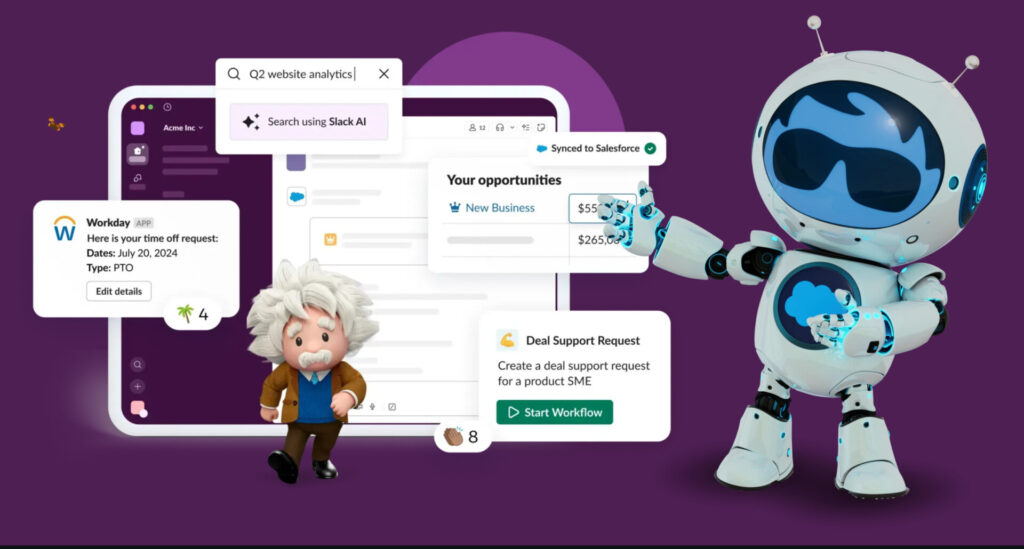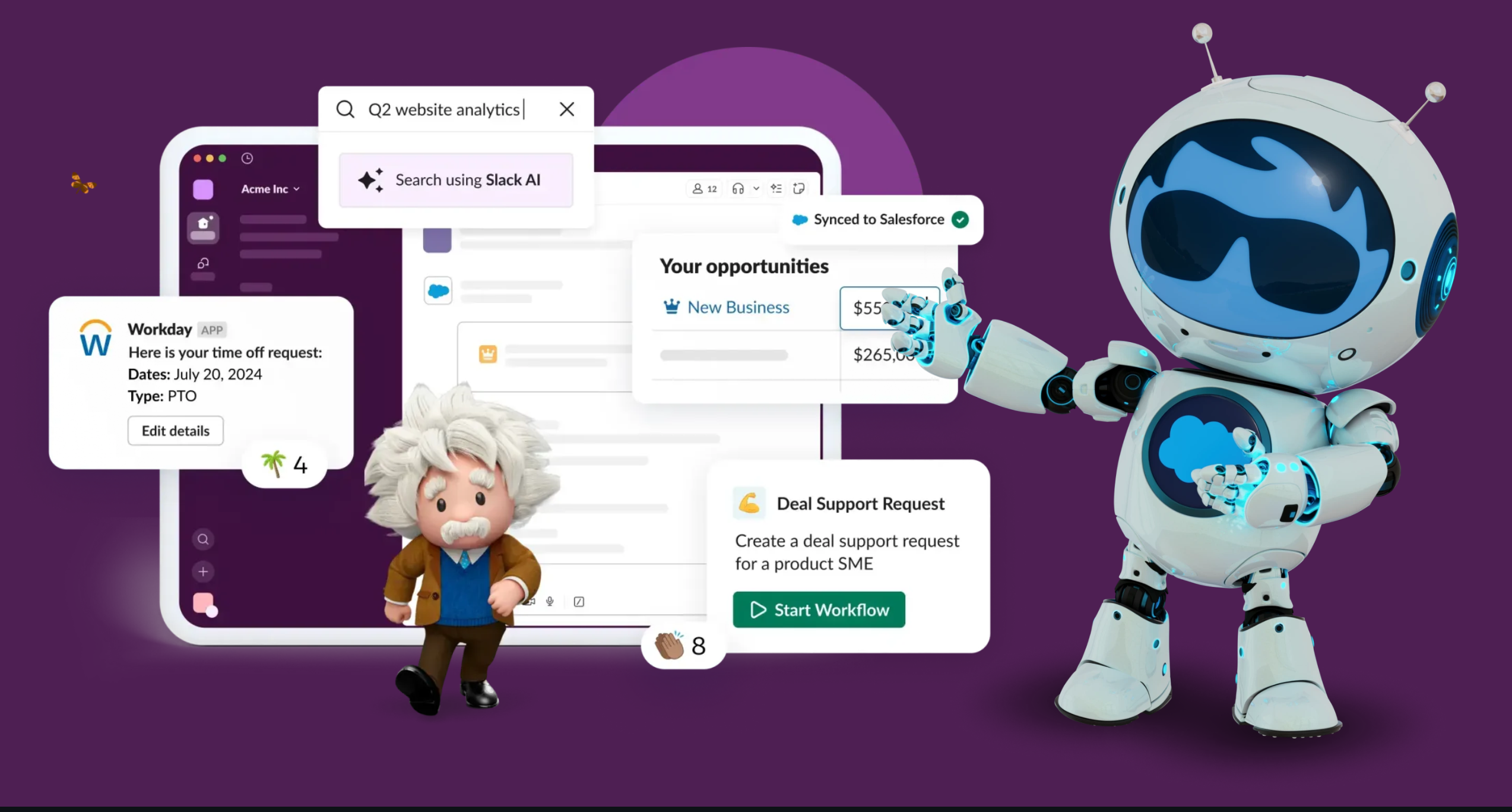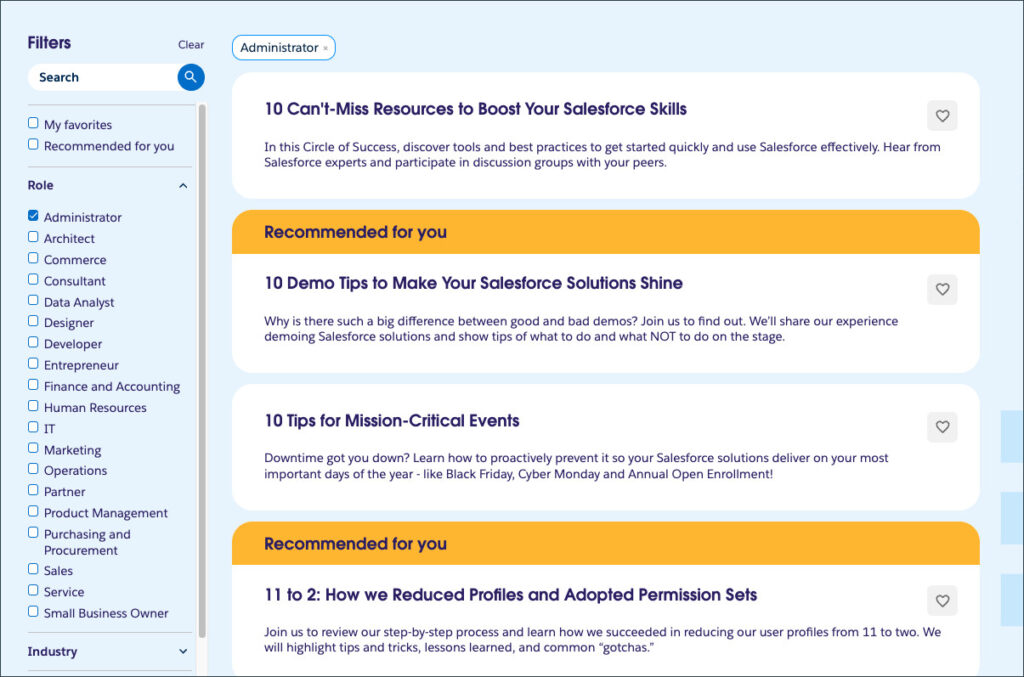Hey, psst! Hi, yes you there, you’re a small and medium business (SMB) owner, right? We have a question for you — how are your leads coming along lately? More importantly, how are you managing them? In a spreadsheet, in your Notes app, or wait – remember rolodexes?
The truth is, lead management is a full time job as you grow your business. And you already have a full time job of running your own business…so, there isn’t much room for more. Let’s talk lead management, the tools you need, and the strategies that can move sales forward for smaller teams.
What you’ll learn:
- What is lead management?
- Why is lead management important for small business?
- The four stages of lead management
- Simple steps to improve lead management
- Your lead management tools
- Get started with Salesforce Starter Suite and Slack
- Lead management made easy
What is lead management for small business?
Lead management is the process of tracking and managing prospective customers, or leads, from the moment they express interest in a product or service until they become a paying customer.
For small businesses, lead management often begins on a smaller scale, perhaps using spreadsheets or simple document-based tracking. However, as businesses grow, there’s a natural progression toward adopting tools to simplify and optimize this process, moving away from manual methods to more automated solutions.
Why is lead management important for small business?
Lead management is big for small businesses because it helps to optimize sales processes, boost efficiency, and ultimately grow faster. Here’s why lead management is so important for growing businesses and startups just like yours:
- Maximizes sales opportunities: By systematically tracking and nurturing leads, you can ensure no potential sales opportunity falls through the cracks.
- Improves conversion rates: Effective lead management allows you to tailor communication and offerings to the specific needs and interests of each lead.
- Optimizes marketing efforts: Lead management helps them prioritize and focus their sales and marketing efforts on the most promising leads, ensuring that time, money, and personnel are allocated efficiently.
- Tracks valuable insights: Tracking lead interactions and conversion rates provides small businesses with valuable data about their sales process. This data can be used to continuously improve sales performance.
- Boosts team productivity: Automating processes like lead scoring and follow-up reminders can significantly improve the efficiency and productivity of sales teams.
The four stages of lead management
Lead management involves four main stages: identification, qualification (sometimes called lead scoring), nurturing, and engagement. The hope is that this approach will convert prospects into sales, and eventually loyal fans.
Boost team productivity with Salesforce
The process is slightly different for inbound versus outbound leads, but broadly, here are the four parts to know — we’ll go into more detail later:
- Identifying potential customers: This stage involves recognizing and capturing new leads, often through marketing efforts, website forms to gather email addresses, or other lead generation activities.
- Qualifying leads: Here, you assess the potential of each lead to determine if they’re a good fit for your products or services. With the help of a CRM, you can assign numerical values to different aspects of a lead, and the resulting score decides whether you prioritize it or not.
- Nurturing leads: At this stage, you engage with qualified leads to build relationships and provide value. This process might include sending regular, targeted email content, offering free trials, conducting follow-up calls, or a combination of all three.
- Converting leads into customers: The final stage involves closing the sale and turning qualified leads into paying customers.
Boost sales with a CRM made for growing businesses
Try Starter Suite for free to close more deals and win more customers, today.

Simple steps to improve lead management
Alright, now let’s explore actionable strategies to enhance your lead management process, focusing on practical steps that can be implemented to boost sales.
Capture leads with a wide net
To generate leads, the goal is to cast a wide net and collect as many initial contacts as possible, and then centralize all lead information in your customer relationship management (CRM) for better conversion.
Here are a few ways to grab some hot leads:
- Create and share gated and ungated content, and offer a monthly newsletter to draw in email subscribers.
- Add digital contact forms, subscriber calls to action (CTAs) and invitations in high-traffic areas of your website.
- Post on social media often through targeted campaigns and interactive content.
- Share your content through media partnerships,webinars, or networking groups.
- Attend or hold live events and collect contact information from everyone who comes to your booth or the event itself.
Qualify leads with a CRM
It’s time to qualify your leads, or rather, let your CRM do it. Once captured, integrate lead qualification directly into your CRM system for small business sales. Establish clear criteria within the CRM for qualification, such as budget availability (do they have the financial capacity to purchase your product/service?), defined need (does your offering directly address a pain point or desire they have?), and timeline (are they looking to make a purchase in the near future?).
A quality CRM will catalog and prioritize this information for sales efforts, and simplify the handover from marketing to sales within your small business.
Nurture leads with personalized efforts
Not all qualified leads are ready to buy immediately. Implementing a lead nurturing strategy within your CRM is important for SMBs to guide qualified leads through the sales funnel. The overarching goal is to consistently provide value and establish trust with your leads over time, using your CRM to improve your nurturing efforts.
Here are four key steps:
- Segment your leads: Categorize leads based on their stage in the buying journey, interests, and demographics in your CRM system. This allows for targeted communication.
- Automate your marketing: Use your CRM’s integration with email marketing platforms to schedule and send personalized email campaigns. Share valuable content and company updates to keep your brand top-of-mind.
- Personalize follow-ups: Make the most of CRM data to inform personalized follow-ups. Sales teams can access lead history, interactions, and preferences to tailor conversations and address specific pain points.
- Target content: Use CRM insights to deliver targeted content on your website or through other channels. If a lead shows interest in a specific product, ensure relevant information is easily accessible.
Track leads with integrated analytics
To make your lead management even better, effective tracking is key. Your CRM automatically logs every lead, call, website visit, and content download, and keeps you organized. Now, it’s time to see how your efforts are doing, spot trends, and improve your approach.
Connect your CRM to analytics dashboards to see relevant data on your leads and get useful ideas for future campaigns. You can also try artificial intelligence (AI) tools in these dashboards to forecast what leads will do, make messages personal, and set up automatic follow-ups, which helps you guide leads more effectively.
Grow Your Small Business With AI Agents
Learn how autonomous AI can scale your small business for efficient growth in our free e-book.

Lead management tools for startups and small business
Lead management tools should be easy to use and implement for your business and your team. We mentioned CRM already, but it’s worth it to say it again, it is the top lead management tool in the biz.
Salesforce provides a comprehensive CRM platform with lead management capabilities and is helpful in the following ways:
- Centralized lead storage and organization
- Automated lead assignment and follow-up
- Lead scoring and qualification
- Sales pipeline management and tracking
- Performance analysis and insights to improve sales strategies
Slack is a solid lead management tool with features that can really improve how you handle prospects and work with your sales team. You can connect Slack with various lead sources like website forms or social media tools.
By linking Slack with other sales tools, you can automate many repetitive lead management tasks. For example, you can get automatic notifications for new leads, assign leads to team members, or set follow-up reminders. This lets your sales team focus on more valuable tasks like personal outreach and closing deals.
Slack’s instant, searchable chat function is useful for sales teams. You can create channels for specific leads or accounts, letting team members quickly share updates, share slide decks and docs, discuss strategies, and give feedback. For instance, if a sales rep needs quick advice on a tough lead, a message in a Slack channel can get them help in minutes.
Boost team productivity with Slack
Bring together your team, your customers, and your tools to help take your business to the next level with Slack — it’s where business gets done.

Get started with Salesforce Starter Suite and Slack
Salesforce Starter Suite, with Slack, helps small businesses manage leads and grow sales. This setup gives you one place to handle customer communications, automate tasks, and work together.
Features, capabilities, and benefits for small business lead management:
Pro Tip: Use Slack’s Workflow Builder to automate complex lead management processes, like assigning follow-up tasks or sending notifications to team members, to simplify your workflows for everyone.
Lead management made easy
Think of lead management as your small business’s secret sauce for growing sales. Tools like CRM systems are key here; they keep everything organized, automate manual tasks, and give you insights so you can turn more leads into loyal customers.
Want to grow your sales? Starter Suite is a great place to start. It’s a small business-based platform that makes lead management easy, from getting new leads to turning them into sales fast. Try it out for yourself.
Start your journey with a free trial of Starter Suite today. Looking for more customization? Explore Pro Suite. Already a Salesforce customer? Activate Foundations today to try Agentforce 360.
AI supported the writers and editors who created this article.
Frequently Asked Questions (FAQs)
Lead management is the process of tracking potential customers from initial interest to becoming a paying customer.
It helps maximize lead generation, improve conversions, build customer relationships, and fuel growth.
Focus on capturing, qualifying, nurturing, and tracking leads, ideally with a CRM.
Slack helps collaborators with lead capture, automating tasks, and enabling real-time team collaboration for efficiency.
It improves sales efficiency, boosts conversion rates, enhances customer relationships, and supports data-driven decisions.







